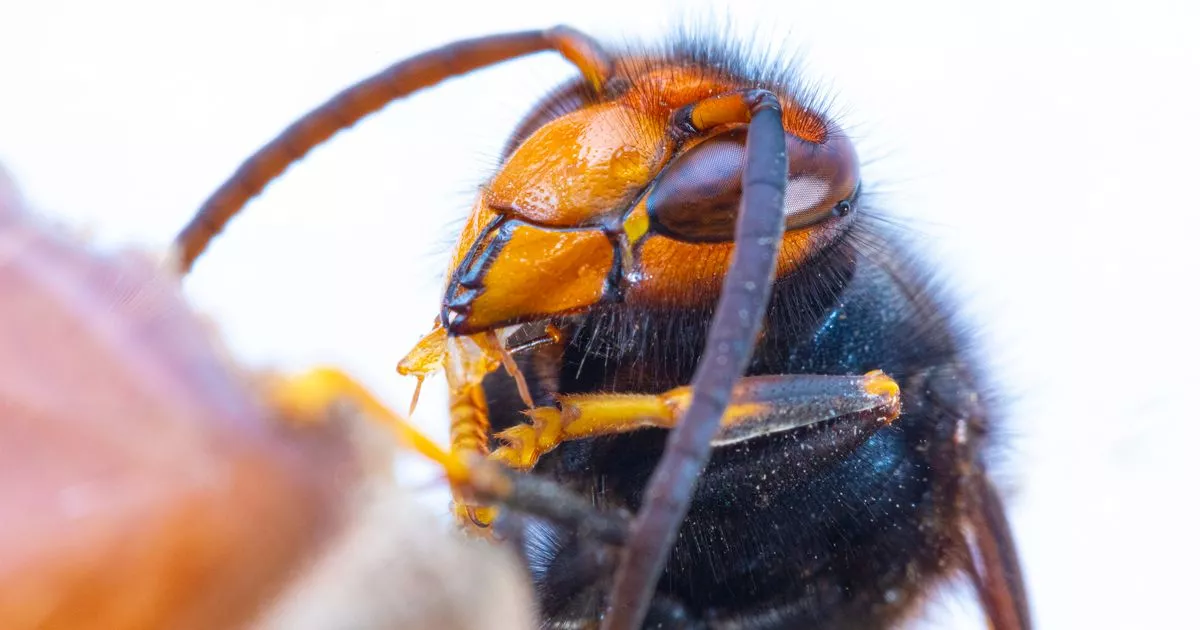This type of hornet is a highly aggressive predator which poses a significant threat to honey bees and other pollinators A rare discovery of a rare Asian Horney in Crosby follows the destruction of a nest in Runcorn in September(Image: Getty)
A rare discovery of a rare Asian Horney in Crosby follows the destruction of a nest in Runcorn in September(Image: Getty)
The discovery of a rare Asian Horney on Crosby beach follows the destruction of a nest in Runcorn in September, which was the first confirmed nest in North West England, the invasive insect was reportedly seen on Saturday, November 1 on the Sefton beach.
Gary Hedges, who works at the Entomology Department at World Museum Liverpool, said: “The Sefton Coast received its first-ever confirmed sighting of the non-native, invasive Asian or Yellow-legged Hornet (Vespa velutina) on 1st November 2025, after a single adult was photographed and reported from Crosby.
“The discovery follows the destruction of a nest in Runcorn in September, the first confirmed nest in North West England.
“According to Defra, all other nests destroyed in 2025 have been from the south coast (with the exception of a single nest in North Yorkshire), making these a worrying sign of northward expansion.
“Adult Hornets are likely to be active whilst the weather remains mild and all sightings should be reported (see below for details). Flowering Ivy bushes in sunny positions are good places to look at this time of year.”
This type of hornet is a highly aggressive predator which poses a significant threat to honey bees and other pollinators in the UK. Numbers of the destructive insect rose rapidly in 2023 and more were detected in the UK than in the previous six years combined.
 Vespa velutina nigrithorax, the Asian hornet, originates from Southeast Asia(Image: Getty)
Vespa velutina nigrithorax, the Asian hornet, originates from Southeast Asia(Image: Getty)
On its website, The British Beekeepers Association has shared important information, saying: “It is crucial all possible sightings are reported so experts can take quick and effective action to eradicate Yellow-Legged Asian Hornets.”
The first Yellow-Legged Asian Hornet in the UK was discovered in 2016. The beekeeping association has previously taken to X, formerly known as Twitter to tell people what action should be taken if the insect is spotted.
In a statement uploaded to the social media site, it said: “Some recent media reports have suggested that pest controllers may be able to help with yellow-legged Asian hornets.
“Currently the only organisation with authority to track & eradicate is the National Bee Unit. All sightings should be reported using the Asian Hornet Watch app.”
The Yellow-Legged Asian Hornet can be identified by:
- Dark abdomen with wide orange stripe on 4th segment
- Yellow tips to legs
- Head black with orange fire
- Thorax black and velvety
Britain has been invaded by Asian hornets this summer – with twice as many sightings of the bee-killing pest as ever before. Since the start of this year, there have been a record number of sightings of Asian hornets.
That includes 82 nests that have been found and destroyed. Last year, there were 40 confirmed sightings and 24 nests destroyed. The previous record was in 2023, when there were 57 sightings and 73 nests destroyed.
This year, the majority of sightings have been in the South coast, particularly in Kent and Sussex, but hornets have also been seen in Hampshire, London, Dorset, Surrey, Shropshire, and even as far north as Cheshire and now Merseyside.
Sightings can be reported via the Asian Hornet Watch app – which is available to download for Android and Apple device – online at irecord.org.uk/enter-non-native-records or by emailingalertnonnative@ceh.ac.uk.
For guidance on how to report and spot Asian hornets, go to: https://www.nonnativespecies.org/non-native-species/species-alerts/#Species_53
